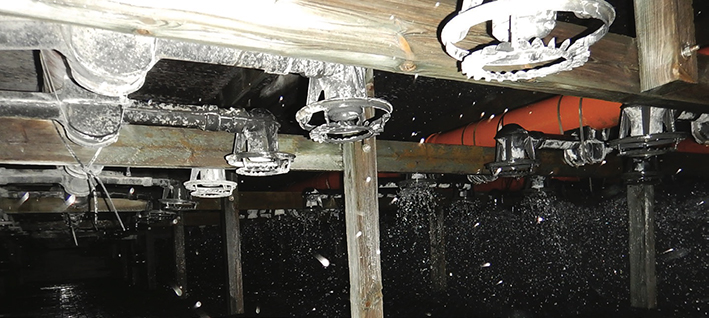Cooling tower OEMs often assemble their systems from a collection of components manufactured by multiple suppliers selected to meet both technical and commercial challenges to create a bespoke range of cooling towers.
There are a number of key components that are essential for effective heat exchange to occur, and it’s often the case that changes and improvements can be made to optimise your cooling tower performance.
As with most systems it is usually possible to take the Cosworth, Cooper or AMG approach and fine tune your system to achieve better results.
Tuning basically means creating the best possible conditions from the right pieces of equipment to achieve the greatest performance, and in cooling towers it is no different.
This is not to say that each individual component of your cooling plant can or should be changed, as it is possible to change things for the worse unless you have a true understanding of how each part interacts with each other to the benefit of the whole system.
In a car engine the most important consideration for performance is getting the fuel to the right places at the right time,sufficiently aerating that fuel and effectively handling the exit gases from the engine.
This is no different in a cooling tower, where the water entering the system needs to be evenly distributed across an effective heat exchange surface, and that it comes into contact with a sufficient volume of air that is also evenly distributed.
In our travels around the UK looking at cooling systems some of the easiest wins when tuning a cooling system come from getting the water balanced across multiple units as well as evenly distributed throughout the equipment.
Maldistribution of water flow will generally spread the system load unevenly across the available cooling surface. This will mean that the units with the highest water flow will need to reject the largest heat load, which will drive cold water temperatures higher which can be detrimental to your process. The units with the lower load may be able to deliver water at a lower temperature, but may also suffer from maldistribution leading to areas of low or no water flow.
Where cooling towers suffer from low or no flow throughout the cooling surface, air flow will be concentrated as these areas offer the lowest resistance to airflow, this results in the wetted areas of the towers being starved of air and thermal performance rapidly decreasing,whilst also leading to higher potential drift rates as the higher air velocity through the partially wetted channels can drag water out of the tower.
While some towers can handle larger variations in flow, many do not, your system in many cases will review the outlet temperature and drive the airflow to achieve set point, if the airflow is not effective, then your fans will absorb more power to try and achieve the cold water set point.
Couple this with a changing demand on your system, where maybe your cooling requirement has reduced, then you have an oversized unit going like the clappers to try and reject the heat with only a portion of the airflow being effective.
This is just one area that can be looked at to improve performance and lower operating cost that is virtually cost free. Taking this approach to each and every key component of your cooling tower can yield some great benefits.
Modifying fill choices, optimising fans,improving distribution, preventing air bypass,and improving air flow in general can get your cooling towers singing the right tune, and cost you less to run whilst delivering colder water to your process.
To find out more please contact us and we can carry out an initial review on your system to see if there are things that can be done to improve performance an reduce operating cost. Call us or visit our website:
DHD Cooling Limited
Sansome Lodge, Sansome Walk, Worcester WR1 1LH
Telephone: 01905 317 370
Email: info@dhdcooling co uk
Website: www.dhdcooling.co.uk








